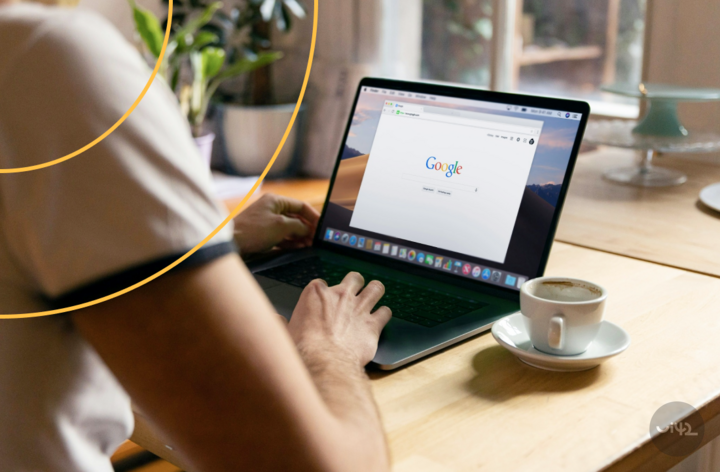SEO audit is a comprehensive document that checks how a website stands in terms of search engine optimization. The compilation of such an audit can be entrusted to an SEO consultant or agency, which can then ensure its comprehensive implementation. Are you interested in more details about what exactly an SEO audit includes and its significance?

What is an SEO audit and what is it for?
SEO audit typically outputs a more extensive analysis that checks all the important factors affecting the website's position in organic search. When we talk about a search engine, in the case of this article, we focus primarily on Google. According to statistics, it has a 95.32% share in mobile searches and 81.95% in desktop searches.
What are the advantages of SEO – search engine optimization?
SEO stands for search engine optimization (Search Engine Optimization). The goal of this set of activities and modifications on the website (on page SEO) and outside of it (off page SEO) is its visibility in unpaid – organic, search. If the page appears at the top of the search results for a key phrase, it is very likely that the searcher will click on it. According to the latest data, the first five results on the first search page (SERP) generate up to 69.1% of all clicks.
While paid advertising in the Google search engine brings results immediately, in the case of SEO – search engine optimization, it is a continuous and long-term process, which compared to paid advertising does not have such an impact on the budget. To know how the website is doing in terms of optimization, what are its strengths and, on the contrary, weaknesses that you can improve, a quality SEO audit is the first step to bounce off.
What SEO tools are used to perform an audit?
For the SEO audit to be a reliable output based on current data, there is a variety of available tools to analyze individual factors. The list of SEO evaluation factors that the algorithm takes into account contains more than 200 items. Some are confirmed, others are just guesses. We bring an overview of the most used and reliable SEO tools that check the condition of the website. Paid and free ones.
UIČKOVSKÝ TIP: Each of the mentioned SEO tools has some advantages and disadvantages, or reasons why SEO consultants prefer it. Therefore, to compile a quality SEO audit, we recommend combining several tools.
Google Search Console is a free SEO tool
Google Search Console is a free tool directly from Google. Easily with it, you can get information about how the search engine sees the website and reveal problems such as indexing, search queries, or how the web stands in the mobile version.
Ahrefs has been no.1 among SEO consultants for a long time
In addition to tips for better optimization and materials for a quality SEO audit, Ahrefs offers, for example, a clear analysis of the competition. Moreover, it can find potentially attractive keywords to focus on and suggest ideas for content creation – an important part of optimization. You can choose your own plan from several paid versions or even put together your own.
Screaming Frog SEO Spider Tool
Screaming Frog is one of the most used SEO tools that can literally crawl the entire website. It discovers interlinking that needs to be fixed, analyzes metadata (title and description), reveals duplicate content, generates a sitemap, and many other details. You can use this helper in a free or paid version.
Semrush is a comprehensive tool for SEO and marketing
And therefore also quality materials for an SEO audit. After a free 7-day trial version to taste, you can decide whether to use this helper for extensive options for auditing pages, analyzing competition, tracking keywords, or content analysis. In addition, Semrush is also useful for competition research, PPC, or even social media marketing.
Google Analytics as a must-have SEO tool
Data is the foundation. You need them not only in the context of automation and constantly advancing artificial intelligence. Data are the most relevant decision-making factor for choosing a suitable strategy and, on the other hand, a mirror that will tell you exactly how you are doing and what needs to be improved. You will find most of the answers to your questions in Google Analytics. It is a free tool from Google that offers detailed statistics on website traffic, user behavior on individual subpages, and conversions that are important for understanding the success of an SEO strategy.
UIČKOVSKÝ TIP: One thing is to work with data, make decisions based on them, and analyze your business. The other, which is talked about less, is to own the data. Are you interested in what the difference is? Read the comparison of two tools – Google Analytics versus Matomo and find out what opportunities owning data brings you.
The technical part of the SEO audit. What does it include?
The SEO audit consists of two parts. Technical and content. For a better understanding of the difference between them, we can say that the technical audit examines what the user does not see, but the search engine does. It is mostly about whether the search engine algorithm can crawl and index the content of the website without problems. Or how fast the web is. There are several parts that the technical part of the SEO audit focuses on. Which are they?
Page indexing – watch out for crawl budget
Page indexing is a process in which the search engine records the content of web pages in its database with the aim of displaying pages in search results. The search engine robot processes the page, and it can be displayed for search queries. For this to be possible, it is necessary for such a page to have links from already indexed pages.
But be careful. The number of pages that the search engine indexes is limited – that is just crawl budget. This budget varies for different websites and is influenced by many factors, such as server speed, the number and quality of internal links, as well as the timeliness and importance of content.
UIČKOVSKÝ TIP: To use the crawl budget effectively, make sure you offer the search engine indexing of important and quality pages. You should avoid duplicate, outdated, or insignificant pages. Examples include subpages with forgotten password information or zero pages in numbering. Just these can be marked with the “noindex” tag and the search engine robot will automatically skip them.
Sitemap and robots.txt
The second option to clearly define to the search engine which subpages to index (include in the search) and which not, is robots.txt. It is a root file directly in the web server directory, within which access to pages is managed (allowed and prohibited). The difference between these two options is that robot.txt does not prevent indexing of pages if there are links to them from other pages, rather it just prevents direct crawling of pages by the search engine. In the case that you do not want to index the page at all, a better option is to use the meta tag “noindex”.
Within robots.txt, it is very desirable to also specify sitemap – so-called site map, which helps in more efficient indexing of all subpages. It doesn't have to be just one. Robots appreciate it if sitemaps are divided, for example, by categories, content subpages (blog), and informational subpages. A bonus tip is to state the priority of the subpage within the entire website, information about how often the subpage changes, and for example, when it was last edited.
What does canonicalization mean in SEO?
Canonicalization of subpages determines the preferred page in cases where there are multiple URLs leading to the same or very similar content. Thanks to this step, the search engine robot can better understand which page to index and subsequently display in the search results, thus preventing problems with duplicate content.
Canonicalization is necessary, for example
- in cases of filtering/sorting products, if the URL address changes with the change of conditions,
- for product variants (color, size, etc.),
- for specific user parameters (if you track data from where he came, etc.),
- when defining unique and important subpages (with the “self-canonical” tag), where there is no other canonical tag.
Pagination and SEO analysis
According to the latest information, search engine robots are so developed that they can recognize pagination themselves. However, still this factor belongs to those recommended. Why? If pagination is not implemented correctly (tags rel=”next” and rel=”prev” to indicate the continuity of individual subpages), it can lead to problems with duplicate content. Since different paginated parts may contain similar or even exactly the same content, robots may have a problem registering and indexing the content if they cannot effectively crawl and index all subpages in the series. In the titles and headings of individual subpages, we also recommend inserting information with the number of the subpage to prevent the mentioned duplicates.
Redirecting and 404 (non-existent pages)
Non-existent pages have been, are, and probably always will be. However, this does not mean that nothing can be done with them. To be properly captured from an optimization point of view, it is necessary to redirect them appropriately. It is easy to happen that such subpages are directed by some internal links directly on the web or the page is already deleted, but the search engine robots have not yet recorded it. SEO consultants therefore recommend regularly checking non-existent pages, for example using one of the above-mentioned SEO tools.
UIČKOVSKÝ TIP: A non-existent or error page 404 should not look like a code error. Did you know that you can design it yourself and ensure that when a user encounters it for any reason, you can direct them back to the website? Several tips on how to do this and funny examples of how to turn 404 into your advantage can be found in the article on our blog.
Page loading speed and SEO
One of the important technical factors of the SEO audit is to check how fast the website is. Page loading speed directly affects the user experience, which is basically a decisive milestone whether the visitor solves the required conversion (purchase, service order, form filling) on the web or not. In other words, the search engine prefers fast websites, because the faster the web, the more satisfied the user. Thanks to which, of course, the bounce rate is reduced and the conversion ratio is increased.
The overall speed of the website is indicated by the Core Web Vitals rating with four significant metrics that are assessed in both the desktop and mobile versions. That it is not just an empty phrase, we were convinced during our cooperation with the Feedo e-shop. Thanks to faster page loading (by 45%) to 2.7 seconds and a more prompt server response (by 72%) we managed to increase the conversion ratio by 5.2%. More details can be found in the Feedo case study.
Responsive web is the basis today
Responsive design means that the content of the page is rearranged according to the used device (smartphone, tablet, desktop) so that the web is clear, easily readable and above all usable. No microscopic font on a large screen or inability to hit the ORDER button when you want to buy shoes or book a massage appointment on mobile. A responsive website, especially from the point of view of evaluating the mobile version, is considered the most relevant by up to 94% of all users. This means that it directly affects usability and also user experience – a significant evaluation element of comprehensive SEO. More information on this topic can be found in the article about why responsive design is one of the most important elements on the web.
Security with https and SSL certificate
HTTPS (Hypertext Transfer Protocol Secure) is an extension of HTTP with a security mechanism provided by the SSL (Secure Socket Layer) certificate. In other words proof that the website is safe and trustworthy. These technologies encrypt communication between the web browser you use and the server. Their basic function is to ensure that all transmitted data, including personal information and payment details, will be protected from misuse. Therefore, the transition to HTTPS is a mandatory ride for every website, not only to increase security and trust of users, but also to improve SEO performance and ensure a better position in search results.
How are the URL addresses and the structure of the pages?
The number of categories or folders within the structure of the page can significantly affect the visibility of the page in the search and allow search engines to index more clearly. If we look at which layer the product is located












